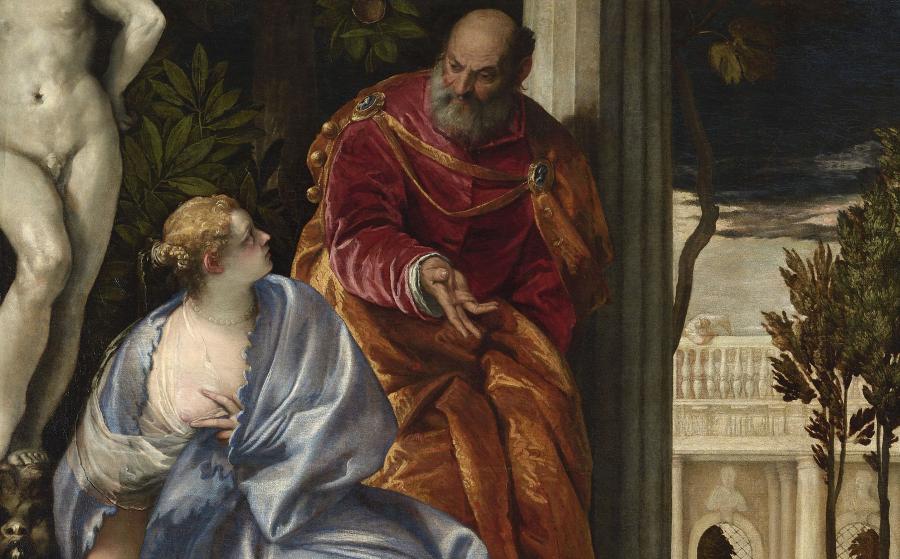Bathsheba Bathing
Information sur l’artiste
Véronèse (Paolo Caliari, dit) [Vérone, 1528 - Venise, 1588]

Bethsabée au bain, vers 1575.
Image © Lyon MBA - Photo Alain Basset
What could this old man, with his serious face and expressive gestures, be talking about to this young woman, who presses her breast with her left hand and seems to test the coolness of the water with her finger? He is dressed in sumptuous velvet clothes and a golden cape adorned with two cameos. She has removed her undergarments and sandals but has donned an ample, purplish-blue cloak. Is this Bathsheba, seen by King David oneevening, high above from the terrace of his palace, while she was bathing? Or is it Susanna, an exceedingly beautiful woman approached by two old men who later accused her of adultery when she refused their advances? Or could it be Esther, another feminine figure from the Bible? The old man wears the golden cape with large buttons that was the prerogative of the Doges of Venice. The coats of arms on the ewer and the casket perhaps refer to an alliance between two influential Venetian families. Veronese has divided the scene into two contrasting parts, while tying the spaces together with subtle colored harmonies and a powerful chiaroscuro. This painting, which dates from around 1575, arrived in France in the 17th century and rapidly became part of the royal collections. Kept at the Palace of Versailles, it was extended at the top and on the left side, undoubtedly to adapt it to wood paneling. In 1991, it was decided to recover the initial format while maintaining the extension behind the current frame.
Around 1575
Oil on canvas
H. 191; W. 224 cm
Sent by the French State, 1811





